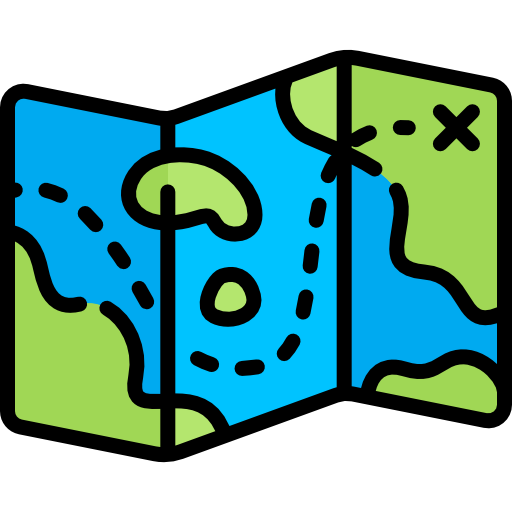Valley of Flowers Trek
10000 / Per Person

Altitude :
14,105 Ft

Duration:
6 Days

Trek Length
40km

Base Camp:
Joshimath

Trek Difficulty :
Easy to Mod.

Altitude :
14,105 Ft

Duration:
6 Days

Trek Length
40km

Base Camp:
Joshimath

Trek Difficulty :
Easy to Mod.
Overview
The Valley of Flowers Trek is one of the most beautiful Himalayan treks that our country has to offer. It is located in the neighbourhood of the Nanda Devi Biosphere Reserve, and the fact that there are so many flowers in bloom across such a large expanse of land helps to make this trek one of the most beautiful in the world. The Valley of Flowers Trek is one of the most well-known routes for hikers of all experience levels and abilities. It covers an area that is 87.5 square kilometres in size and is located at an elevation of 4,400 metres. Trekkers are able to savour the experience of beginning this Himalayan trek and cross it off their bucket list thanks to the challenging ascents and descents, which are made possible by the region’s steep terrain. The sheer beauty that the rich biodiversity has to offer attracts many avid nature lovers. Many pilgrims choose to make the journey to the valley of flowers in addition to their journey to the Hemkund Sahib, which is located at the end of the trip. The Valley of Flowers Trek, which is one of the oldest known treks, was recognised as a World Heritage Site by UNESCO in the year 2002, and ever since then, it has been on the bucket list of every hiker in the globe. The valley is home to more than 520 different types of flowers, all of which join together to create a tapestry of hues right in front of your eyes, with pink, blue, and purple being the predominate colours.
The Valley of Flowers National Park can be found in the Chamoli district of Uttarakhand. In addition to being home to a wide variety of plants and flowers, the park is also home to a large number of endangered animal species, such as snow leopards and red foxes. The Valley of Flowers National Park and Nanda Devi National Park, both of which are located at an elevation of around 3,600 metres (approximately 12,000 feet), join together to create a transition zone between the formidable Himalayas and the Zanskar range of mountains. When it comes to assessing the difficulty level, the valley of flowers trek falls into the category of easy to moderate. It is often regarded as the ideal trip for novice trekkers and is also a fantastic option for trekkers travelling with their families. The ascent to the Hemkund Sahib Gurudwara, which is the highest Gurudwara in the world and one of the most significant pilgrim destinations in Uttarakhand, is the one that presents the most challenge. The valley itself spans about 10 kilometres in length, and the hues of rainbows are scattered throughout the patchwork of grass, tempting you to pause and look at them more attentively. As you continue to make your way down the valley while walking on the small path that weaves in and out of the flower beds to create room for passage, the aroma of flowers lingers in the air and is difficult to ignore.
Itinerary
Day 1: Drive from Haridwar to Joshimath
Time: 10 hrs approx
We will start our journey from Haridwar. Travel to Joshimath will commence after all hikers are picked up at the Haridwar train station. We’ll be picking people up from Rishikesh as well as the city of Badrinath on our way to Joshimath via the Badrinath road. The landscape you’ll pass through your route to Joshimath will blow your mind. Don’t forget to bring your camera so you can record these unforgettable experiences. Although while the 9-hour trip to Joshimath may leave you exhausted, keep in mind that you will never lack for stunning scenery. As we ascend, the river that parallels you on the other side will get wilder and more intriguing. You’ll go via four of the Panchprayag, or five happy links of the Ganga, on your way to Joshimath: Devaprayag, Rudraprayag, Karnaprayag, and Nandaprayag. Now is the moment to get out your camera and sit back with wide eyes to catch some really breathtaking scenes of nature.
Day2: From Joshimath to Govindghat-Pulna and trek to Ghangharia
Around 22 kilometres separate Govindghat and Joshimath. Get up bright and early in the morning because you have a trip to Govindghat planned for right after breakfast. You will arrive to the last Vishnuptayag as you go down the path. We will arrive at Govindghat at about eight in the morning, and then go on to Pulna, which is located just four kilometres away from Govindghat. You should go ready for a challenging 9 kilometre race that includes crossing a creek called Pushpawati. Along this route, there are a number of little shops that sell delectable food items like as hot noodles, paratha, tea, omelettes with bread, and a variety of other similar dishes. As a result, you won’t ever have to worry about being hungry. After we have arrived in Pulna, we will begin our walk to Ghangharia on a well-defined stone-paved route that is appropriately designed with steps. You will be arriving at Bhyundar village, after 5km of walking. This settlement is well-known for the breathtaking vista that it provides of the Hathi Parvat mountains in the distance. In addition to this, the path is well-known for providing stunning vistas of the breathtaking natural environment that the world around us has to offer. You will first be given a delicious lunch, and then you will continue on the trail, which will get somewhat more difficult. You will arrive in Ghangharia in the evening, but before the sun goes down, and have time to rest while taking in the breathtaking scenery of the enchanting locale. After you have reached Ghangharia, you will be at a height of 3,000 metres (10,000 feet). You will also get the opportunity to see several unique bird species that are exclusive to the region’s mountainous terrain and can only be seen there. The guest home will serve as a gathering place for the hikers to unwind and spend the night throughout the evening.
Day3: From Ghangharia to Valley of Flowers and back
Get up and eat breakfast by 7:00 in the morning, even if you have to get up early. The third day of our trip will be rather eventful since we will be hiking from Ghangaria to Valley of Flower and then back to Ghangaria again. This day will undoubtedly restock your recollections with some unforgettable and breathtaking perspectives of dreamland. The journey to Valley will allow you to feel the peace and tranquilly of nature away from the clamour and activity of city life. This is because Valley is a genuine natural beauty as well as the natural paradise of the world. From Ghangaria, the distance to the beginning of the hike is nearly 4 kilometres. The length of the valley is around 6-7 kilometres, and the distance that may be travelled inside the valley is going to be determined by the manner in which the trekkers choose to explore the valley. But, it will also be contingent on the stamina of those who are going on the walk. After you leave Ghangaria, the arrival of the forest check station will be after a period of thirty minutes. Despite the fact that you may not find the check post to be intriguing, there is a waterfall called the Laxman waterfall that is located just in front of the check post. After hiking for twenty minutes through the forest, visitors will reach the next point of interest. In this particular location, you will discover the Pushpavati river winding its way under the wooden bridge, providing a picture-perfect illustration of beauty. Even if it is rather common, there is still something special and captivating that you may catch with your camera. Like in times past, the path is both steep and stone-paved throughout its whole.
As you get further down the valley, you will come across a number of bridges and spots where landslides have occurred. As soon as you step foot inside the valley, you will be able to hear the birds singing a beautiful tune and the sound of water trickling. The unique and otherworldly natural beauty that may be experienced on this walk will transport you to a new realm. The valley is going to provide you with great experiences as well as stunning sights that are going to exceed any expectations you may have had. You will discover several native flowers in the Valley of Flowers hike such as blue poppy, hooked stick seed, White leaf, meadow geranium, hog foot, Himalayan rose, and dog flower. The views of the Himalayan peaks are pretty delicious and sparkling, and you cannot miss them. By the end of a stretch that is five kilometres long on a glacier, all of these bright blooms will have faded away. Since this is an experience that you just cannot afford to miss, you should hurry up and make your way to the Pushpavati River as soon as possible in order to make the journey more enjoyable and memorable. You may discover some very magnificent views of nature close to this river, and you can even rest right in the middle of nature itself. If you are sufficiently fortunate and the weather cooperates, you may also be able to take in notable Himalayan peaks such as Gauri Parvat, Nilgiri Parvat, Rattaban, Bhyundar Khal, and a number of other mountains. After completing our walk, we will make our way back to Ghangaria in time to have a scrumptious meal before the sun sets.
Day4: From Ghangharia to Hemkund Saheb and back
After a hearty breakfast, we will get started on our walk as soon as possible in order to get to the well-known holy site of Hemkund Sahib as quickly as possible. It is situated at a height that is both alpine and above the tree line at the same time. As a result of the large number of people that go to Hemkund Sahib in the hope of receiving blessings, the path that visitors use is not only quite broad but also very well marked. Along the path that leads from Ghangaria to Hemkund Sahib, there are a number of tea booths and dhabas that you may stop at. Along this route, when you get closer to an elevation of 4,000 metres, you will see that there are many Brahma Kamal flowers blooming. The ascent is unrelenting despite having just a little gradient. The journey to Hemkund Sahib is estimated to take between three and four hours to complete. You need to be aware that The Hemkund Sahib is regarded as the highest gurudwara in the world and is one of the most revered shrines for every Sikh.
Day5: From Ghangharia to Govindghat and drive to Joshimath
Once you have breakfast in the morning, you will begin the descent to Govindghat, and then you will drive back to Joshimath to complete the journey. At this location, Badrinath is around 25 kilometres away and can be reached in one hour. If the conditions of the road and the weather allow us, Badrinath will also be on our itinerary. The fifth day of the walk will be spent travelling in the opposite direction of the previous days, from Ghangaria to Govindghat. The walk is not difficult at all, and it provides you with a stunning panorama of the surrounding landscape, which you probably did not even anticipate seeing. When we have arrived at Govindghat, we shall only go to Badrinath if the conditions of the route and the weather are favourable. The travel to Badrinath is very incredible since it provides a beautiful view of waterfalls as well as a river that is quite stunning.
Day6: From Joshimath to Haridwar drive
Although it is the last day of the vacation, you should give it your all and try to savour every moment of it. We will start our journey back to Haridwar at six in the morning, with the goal of arriving there between six and seven in the evening. Only when you are in transit will you be offered breakfast in addition to lunch. Around 8 o’clock in the evening, all of the trekkers will be able to make their appointments for the ride back to their respective homes.
Inclusion
- 6 days premium trek
- Double sharing basis of tents through the trek.
- Dehradun to Sankri & Return Transport in Tempo/Bolero/Sumo Vehicle
- All meals – vegetarian
- Campfire at Camps (If Available)
- Trekking permits and forest camping charges
- Trekking equipment (Tents, sleeping bags, ice axes, ropes, etc.)
- Expert trek leader (qualified in basic/advanced mountaineering courses)
- Services by Expert Team (guides, cooks, helpers)
- Safety equipments (first aid, medical kit, etc.)
- Achievement Certificate
- Memories of Life Time
Exclusion
- Pickup from your place
- Luggage carries charges
- Food during travel
- Any kind of personal expenses
Fitness
As you climb to higher altitudes, the air grows thinner and less oxygen is present. The amount of oxygen in our blood is equivalent to the proportion of haemoglobin that is saturated with oxygen. At altitudes above around 2,100 metres (7,000 feet), the amount of oxygen carried by our blood starts to decrease. At the same time, the human body possesses both immediate and long-term adaptations to altitude that help it somewhat compensate for the shortage of oxygen.
A Great First Trek for Anyone Who Wants to Get Into Hiking:
- The Valley of Flowers trek is an Easy to Moderate level trek in terms of fitness requirements. The track is well-marked and has only modest inclines and declines. Water fountains may be seen at various points throughout the path. However, it’s still best to be ready if you’re planning your first major Himalayan trekking adventure. Here is a plan for getting in shape for the trip.
- Our hikes are typically designed such that you cover around 9 kilometres in six hours, however this might vary somewhat depending on the terrain. It’s about the same as walking 6 kilometres an hour over the plains, therefore the speed is around 1.5 kilometres per hour.
- Following this plan, you may train yourself to run 3 kilometres in 30 minutes. Always begin your workout routine with some light stretching and warm-up moves.
- Follow this training schedule for trekking fitness required:
- Week 1: Walk for 10 minutes at a fast pace, jog for 10, and finish with a slow stroll for 10 minutes.
- Week 2: 15 minutes of jogging, followed by a 5-minute brisk walk. A leisurely stroll that takes no more than 5 minutes
- Week 3: Walk briskly for five minutes. Jogging for 15 minutes A brisk stroll that takes no more than 5 minutes
- Week 4: Do a brisk 5-minute walk, then a 25-minute jog, and finish with a 5-minute cool down.
Safety
Points to remember for safety in the trek:
- It is essential that you arrive at the starting point of any hike or excursion in the best possible physical condition and readiness.
- The hike is not tough; in fact, if you can keep both your feet and your mind calm and strong during the journey, you will discover that the hike is rather simple.
- When you are out on a hike, bear in mind that you may not always be with your guide and that you may not always be on the correct trail.
- The majority of individuals glance both where they are going and where they are going while they are walking; this might produce twitching in your legs, which can make the whole journey difficult.
- It is imperative that you see your physician if you are experiencing any kind of health issue.
- It is imperative that I have my medical equipment with me at all times; it is of the utmost significance.
- Indiantreks will ensure that you have a fully stocked first aid kit at all times, including oxygen cylinders and other medications that may be required throughout the trek.
- In the event that any of the trekkers have any more difficulties, the stretcher is used to transport them back to the base camp.
- During the Valley of Flowers trek walk, our camp is situated close to the tree line, so you won’t have any trouble getting enough oxygen there.
- In the event of a medical emergency, you should seek the assistance of your guide or another trekker who is knowledgeable in the area.
How To Reach
Directions to go to Haridwar:
- By Air: Jolly Grant Airport is the domestic airport that serves Dehradun and Haridwar, and it receives frequent flights from the main metropolises located across India.
- Traveling by Train: The Haridwar junction is the closest railway station, and it has excellent connections to major cities located around India.
- By Road: The road network in and around Haridwar is extensive and convenient. To get to Hairdwar from Delhi or any of the other surrounding cities, you have the option of either driving there yourself or hiring a cab or taxi. In addition, there is a consistent bus service between Haridwar and the surrounding areas because to the extensive road network.
Thing To Carry
PARTICIPANTS MUST BRING FOR VALLEY OF FLOWERS- TREK
- 50–60 ltrs backpack
- Strong hiking boots: a leather upper is best because it gives your ankles more support. If you don’t have a pair yet, you should get one as soon as possible and wear it a lot so that it breaks in well. This will help keep blisters from forming.
- Tennis shoes or sandals that are light enough to wear in camp
- Two pairs of thick wool socks, if possible.
- Two pairs of everyday nylon socks to wear underneath the wool socks to prevent blisters.
- One shirt for hiking, preferably with long sleeves.
- Long John top: This is also called thermal underwear, and it should be made of wool if it is the first layer.
- Two each of warm shirts and pants for camp
- 1 each rain cot/poncho
- Warm Jacket: 1
- One pair of wool gloves as thick as can be bought on the market.
- Long Johns: The first layer should be wool if possible.
- Under wear: 2-3 changes Shorts or pants for hiking: 1
- Sunscreen lotion is up to you. Chap stick or lip balm is optional.
- Water bottle: Two 1-liter bottles (Pepsi bottles work well), make sure they don’t leak.
- Headlamp or flashlight: A headlamp is best because it frees up your hands for work. If you bring a flashlight, bring extra batteries.
- Items for the bathroom, like a toothbrush, toothpaste, etc. And a small one-person medical kit.
- Cotton or nylon for a sun hat. Sunglasses: Those with an anchor are best.
Must Read Articles
Best time for the trek
🗓️ Best Time to Trek — A Guide by Octatrav
One of the key advantages of many Himalayan treks is that they remain accessible for a large part of the year. Most trekking routes open up in March, welcoming trekkers with springtime freshness and moderate temperatures. This season continues through late June, offering pleasant weather and clear views—ideal for a memorable trekking experience.
🍁 Trekking resumes in mid-September and continues until late November, when the landscape transforms with golden leaves and crisp air. This autumn window is perfect for those who prefer scenic beauty combined with clear skies.
❄️ Winter trekking, although breathtaking, comes with challenges. From December to mid-March, most high-altitude trails get buried under heavy snow, making them inaccessible or risky. Government authorities usually restrict entry during this time to avoid mishaps due to extreme cold, snowfall, and avalanches.
✅ Summary:
Spring & Summer (March–June): Best time for pleasant weather and blooming landscapes.
Monsoon (July–Early September): Most trails are closed due to safety concerns.
Autumn (Mid-September–November): Ideal time with great weather and views.
Winter (December–Mid-March): High snow levels; many treks remain closed.
With Octatrav, you’ll always be informed about the best seasons for your chosen trek. Our expert guidance ensures that you trek during the safest and most scenic times of the year, making your adventure both memorable and secure.
How Difficult is the trek
This trek is generally considered to be of moderate difficulty, with a rating that can vary from easy to challenging depending on your experience and fitness level.
The journey begins at a base village situated around 6,000 ft, gradually ascending to a maximum altitude of nearly 11,500 ft over the course of a few days.
While the route mostly involves a pleasant hike through scenic landscapes, here are two main reasons why it falls under the moderate category:
– Long daily distances: On average, you may be covering 10 km per day, which demands good stamina and consistent pacing.
– Limited exit points: Most treks of this nature have only one route in and out, making emergency exits or quick returns difficult in case of unforeseen situations.
How to get fit for your trek
How to Prepare for a High-Altitude Trek
Fitness Guide by Octatrav
Preparing for a trek requires building both stamina and strength. One of the best ways to get started is by jogging, which targets the same muscles used during trekking—calves, glutes, and hamstrings. It’s a simple and effective way to improve endurance without the need for any equipment.
Minimum Fitness Target
To trek comfortably, you should be able to run 5 km in under 60 minutes. This ensures that you can maintain a steady pace and handle long walking hours at altitude.
How to Achieve This?
Here’s a structured plan you can follow:
🏃♂️ Cardio Training:
Jog at least 4 times a week – consistency is key.
Start small – begin with 2 km runs and gradually increase the distance.
Pace improvement – once you’re running 5 km, aim to bring your timing down to under 35 minutes.
Maintain for 2 weeks – consistently hitting this goal helps build real endurance.
⏳ Training Duration:
Prepare for at least 4–6 weeks based on your current fitness level. The earlier you begin, the better your trek experience will be.
💪 Strength Training Routine
Combine cardio with strength workouts to build muscular endurance:
Squats – builds quads, glutes, and hamstrings.
Lunges – mimics trekking motion; strengthens the entire lower body.
Step-ups – improves climbing strength for steep trails.
Core exercises – planks, Russian twists, leg raises for balance and stability.
Back workouts – deadlifts, bent-over rows, and shoulder presses to carry your backpack with ease.
🧘♂️ Flexibility & Recovery
Stretch daily – especially your calves, hamstrings, quads, and lower back.
Incorporate yoga or Pilates – enhances flexibility and mental focus.
Take rest days – they are essential for muscle recovery and injury prevention.
🔁 Trek-Ready Summary
🏃♂️ Cardio: Build stamina through jogging.
💪 Strength: Focus on legs, back, and core.
🤸♂️ Flexibility: Stretch regularly and stay injury-free.
⏳ Consistency: Stick to a 6–8 week routine for best results.
10 Reasons to Choose Octatrav for Trek
Why Choose Octatrav for Your Trekking Adventure?
Trekking in the Himalayas is a thrilling and unforgettable experience. Whether you’re walking through snow-covered paths, lush forests, or peaceful riversides, choosing the right trekking operator is crucial for a safe and comfortable journey.
Octatrav stands out as a trusted name in the trekking world. Here are 10 strong reasons to choose Octatrav for your next high-altitude adventure:
1. Experienced Professionals
Octatrav’s team includes highly trained professionals who know the terrain, weather, and routes in depth. Their insights and support will elevate your trekking experience.
2. Focused on Safety
Trekking at altitude can be unpredictable. Octatrav ensures your safety by equipping the team with first-aid kits, oxygen, and emergency protocols for any situation.
3. Small Group Sizes
To give you personal attention and a relaxed experience, Octatrav keeps group sizes small. This also reduces environmental impact and makes for smoother trekking.
4. Eco-Friendly Trekking
Octatrav encourages responsible travel. From minimizing plastic use to proper waste disposal at campsites, they help you leave no trace.
5. Comfortable Camping
After a long day of trekking, good rest matters. Octatrav sets up cozy camps with quality tents, warm sleeping bags, and hot meals so you sleep well and stay energized.
6. Nutritious Meals
Fueling your body right is essential. Octatrav serves fresh, nutritious meals for both vegetarians and non-vegetarians to keep your energy levels high throughout the trek.
7. Affordable Packages
You don’t have to overspend for a great experience. Octatrav offers budget-friendly packages that include accommodation, meals, guidance, and permits—everything you need.
8. Relaxed & Scenic Pace
Octatrav designs treks that balance exploration and rest. You’ll get ample time to absorb the beauty around you without rushing through the journey.
9. Customizable Itineraries
Want a special experience? Octatrav helps you tailor the trek to your preference—be it a solo hike, photography-focused trail, or a slower pace.
10. Trusted by Trekkers
Octatrav is praised by many happy trekkers for its hospitality, safety, and professionalism. The positive reviews speak for themselves.
Why You Should Do the Har Ki Dun Trek
Why Choose This Himalayan Trek for Your Next Adventure? – by Octatrav
Exploring the Himalayas is a dream for many, and every trail has its own magic. Whether you’re a first-time trekker or a seasoned explorer, here are ten reasons why your next trek with Octatrav can be an unforgettable experience:
1. 🏔️ Breathtaking Scenery
Enjoy mesmerizing views of snow-covered peaks, lush green valleys, sparkling rivers, and alpine forests. Each turn on the trail feels like walking through a postcard.
2. 🏡 Rich Cultural Experience
Pass through remote villages where you can interact with warm-hearted locals, witness age-old traditions, and taste authentic mountain hospitality.
3. 🌿 Diverse Flora and Fauna
From rare Himalayan birds to elusive animals like musk deer or black bears, the region is rich in biodiversity. Nature lovers and wildlife photographers will find every step rewarding.
4. 🥾 Moderate Difficulty Level
Most Himalayan treks are rated as moderate, which makes them suitable for beginners with preparation, and still exciting for experienced trekkers looking for beauty and challenge.
5. 📖 Mythological & Historical Depth
Many Himalayan regions are steeped in legend and ancient lore. Walking these trails often feels like stepping into a living story from Indian epics or ancient folklore.
6. 🤫 Peaceful & Untouched
Less commercialized treks offer serene trails where you can disconnect from city chaos and truly reconnect with nature and yourself.
7. ⛺ Unique Campsites
Camp under a sky full of stars, beside rivers or deep in pine forests. The silence, the chill, the camaraderie — it’s an experience that stays with you forever.
8. 🎒 Adventure Add-ons
Beyond trekking, enjoy photography, bird watching, star-gazing, or even meditative moments in nature. It’s not just a trek — it’s a full adventure retreat.
9. 🌅 Magical Sunrises & Sunsets
Witness golden hours like never before — with Himalayan peaks glowing pink, orange, and gold. These views are pure magic and make every effort worthwhile.
10. 💪 Personal Growth
Trekking challenges your body and mind, pushing you beyond limits. By the end, you’ll not only have beautiful memories but also a stronger, more confident version of yourself.
